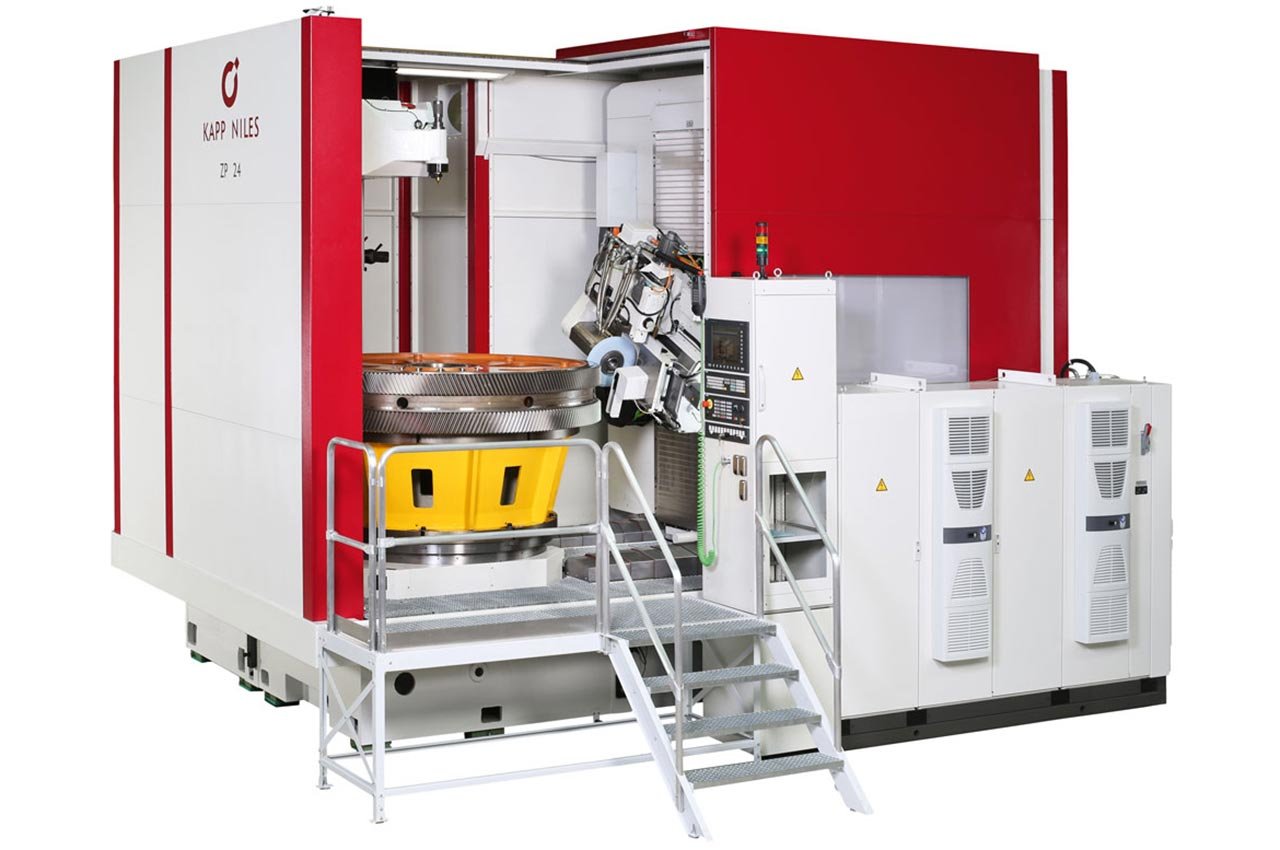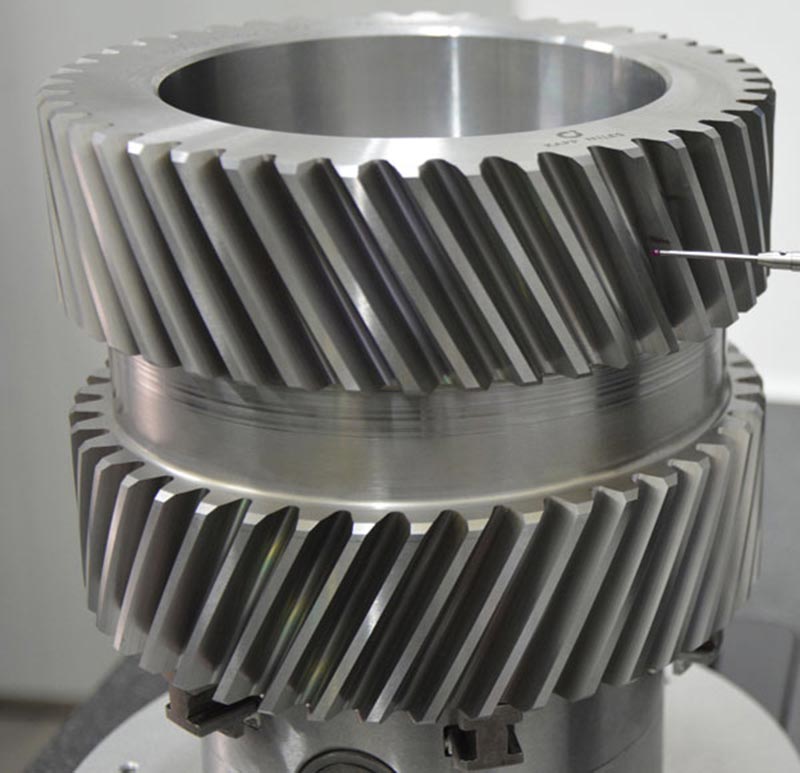
Holger Staub, Manager Product Management Aerospace with KAPP NILES
Increasing demand for double helical gears in planetary reduction gear boxes for engines in civil aviation has necessitated a number of new capabilities and technologies.
Double helical gears (herringbone gears) are characterized by a symmetric arrangement of two identical gear teeth with exactly opposite helix angles. As a result of this symmetry, the axial forces in the gearbox negate each another.
For many years such double helical gears, as an example for components with geometrical interference, have been a special challenge in finishing gears. While in the past military low lot size applications might have been the main focus, there is now a current boost in demand for double helical gears in planetary reduction gear boxes for engines in civil aviation. Increasing requirements for weight reduction and fuel saving lead to decreasing sizes of design forms.
Typical sun or planetary gears of such transmissions have approximately the following main parameters (values based on a workpiece proposed to be shown at IMTS 2018, not a customer workpiece):

KAPP NILES IMTS show workpiece
Assuming that the gap between both gears could be reduced by just 10 mm (0.39 in) the total width and consequently, the weight of the workpiece would decrease approximately by 7.7 percent, a massive reduction in the aerospace industry directly linked to fuel saving of the aircraft. In fact, KAPP NILES has proven by ideal combination of machine, grinding spindle and tool that customers could achieve or even surpass such design goal.
Hard gear finishing of the tooth flanks can only be done by profile grinding. Inherent to the process, the gap is necessary between the gear teeth for the tool run out. Traditional tool concepts are dressable or non-dressable CBN profile grinding wheels mounted with screws to one or two grinding spindles. Tool diameters are often restricted to approx. 80-100 mm (3.15-3.94 in) by the spindle size, interference of the grinding spindle and in case of dressable tools of course by the additional diameter range required for dressing.
But such traditional grinding solutions do not meet any longer the increasing demands regarding gap (= weight) reduction, quality, surface finish but also day-to-day production demands for optimum economics in the competitive global civil aerospace market.
When grinding double helical gears, KAPP NILES CBN tools offer the decisive advantage that they can be designed with the optimum diameter for the gap width available while guaranteeing consistent quality across their entire tool life. Grinding them is only possible with an ideal interaction between machine and tool. As in every sector it is important to keep the balance between costs and productivity without compromising the precision.
To meet all customer demands KAPP NILES has developed unique 3D tools for optimizing gear designs